5 October
1518 – Formal betrothal of Princess Mary, daughter of Henry VIII and Catherine of Aragon, and the Dauphin of France.1528 – Death of Richard Foxe, Bishop of Winchester, founder of Corpus Christi College, Oxford, and Lord Privy Seal in the reign of Henry VII and at the beginning of Henry VIII's.
1549 – Edward Seymour, Protector Somerset, ordered a gathering of men at Hampton Court Palace, where he was lodged with the young Edward VI due to tensions mounting between Somerset and John Dudley, Earl of Warwick.
1553 – Parliament met in Mary I’s reign – It repealed the “treason act” of Edward VI’s reign, passed an act declaring the legitimacy of Mary I, and reinstated the Mass in Latin, celibacy of the clergy and ritual worship. It was as if the reformation of Edward’s reign had never happened.
1555 – Death of Edward Wotton, physician and naturalist. He was buried in St Alban Church, Cheapside, London. Wotton is known for starting the study of zoology and his works included De differentiis animalium libri decem which he dedicated to Edward VI.
1598 – Burial of Thomas Crooke, Church of England clergyman, at St Mary Woolchurch in the chancel.
1605 – Death of Sir Edward Lewkenor, politician and Puritan patron, at Denham Hall from smallpox. He was laid to rest at Denham church.
6 October
1510 – Birth of John Caius, theological scholar, Royal Physician and founder of Gonville and Caius College, Cambridge, at Norwich. He was the son of Robert Caius and his wife, Alice (née Wode). Caius studied medicine at Padua and was physician to Edward VI, Mary I and Elizabeth I.1536 - The traditional date given for the execution of reformer, scholar and Bible translator, William Tyndale. Tyndale, whose works include “The Obedience of a Christian Man” (a book Anne Boleyn shared with Henry VIII), had incurred the wrath of Henry VIII after the publication of his “The Practyse of Prelates”, in which he opposed Henry VIII’s planned annulment from Catherine of Aragon.
1557 – Death of John Capon (also known as John Salcot), former Benedictine monk and Bishop of Salisbury, probably from influenza. He was buried in the choir at Salisbury Cathedral. He appeared to have reformist leanings in the reigns of Henry VIII and Edward VI, but became a conservative Catholic again in Mary I's reign, and was involved in the examination of those deemed to be heretics.
7 October
1506 – Death of Sir Thomas Frowyk, Judge and Chief Justice of the Common Pleas. He was buried with his first wife, Joan, at Finchley Parish Church in Middlesex, on the north side of the chancel.1533 – Death of Sir John Scott, soldier. Scott served as a Senior Captain in the army sent to the Low Countries in 1511 to support Margaret of Austria, and was rewarded for his service by a knighthood. He also served in France in 1514 and 1523.
1577 – Death of George Gascoigne, author, poet, courtier and soldier, in Stamford, Lincolnshire. He was buried there, at St Mary's parish church. He is listed as one of the most important Tudor poets, along with the likes of Sir Thomas Wyatt, Henry Howard, Earl of Surrey, and Philip Sidney. His works included “A Discourse of the Adventures of Master FJ”, “The Supposes”, “A Hundredth Sundry Flowres...” and “The Posies of George Gascoigne, Esquire”.
1589 – Death of William Hawkins, merchant and sea captain, at Deptford. He was buried at St Nicholas's Church. In 1580, Hawkins led an expedition to the Caribbean, returning to England with treasure and sugar. In 1588, he was involved in leading seven ships from Plymouth against the Spanish Armada.
8 October
1515 - Birth of Lady Margaret Douglas, Countess of Lennox. Margaret was the daughter of Margaret Tudor, Queen Dowager of Scotland and sister of Henry VIII, and Archibald Douglas, 6th Earl of Angus.1536 – The commons, i.e. the people, approved the petition of grievances drawn up by the rebels of Horncastle, Lincolnshire.
1549 – Edward Seymour, Duke of Somerset and Lord Protector, was proclaimed a traitor by the King's Privy Council.
1561 – Baptism of Edward Wright, mathematician and cartographer, at Garveston in Norfolk. Wright is known for his treatise “Certaine Errors in Navigation” (1599), his work on Mercator's map projection and his translation of John Napier's 1614 Mirifici logarithmorum canonis descriptio into English.
1594 – Death of Ellis Price (Prys), scholar and administrator. Price served Henry VIII as a Monastic Visitor in Wales 1535, Commissary-General and Chancellor of the diocese of St Asaph, and as an administrator in Wales after the “Acts of Union”. He also later served as Sheriff of Merioneth, Anglesey, Caernarfon, and Denbigh, and a member of the council in the Marches of Wales.
9 October
1514 - The eighteen year-old Mary Tudor, sister of Henry VIII, married the fifty-two year-old King Louis XII of France at Abbeville.1529 – A writ of praemunire was filed against Cardinal Thomas Wolsey in the court of King’s Bench.
1536 – Pilgrimage of Grace: The rebels of Horncastle, Lincoln, dispatched their petition of grievances to the King and also north into Yorkshire.
1547 – Baptism of Miguel de Cervantes, author of Don Quixote, in Alcalá de Henares, Spain. His actual birthdate is unknown.
1573 – Death of Sir Thomas Wroth, courtier, politician and landowner. Wroth served Edward VI as a Gentleman of the Privy Chamber and was with him when he died.
1604 – Death of Sir William Peryam, Judge, at Little Fulford, near Credington in Devon. He was laid to rest at Holy Cross Church. Peryam was on the commissions at the trials of Mary, Queen of Scots, the Earl of Arundel, the Earl of Essex and Sir John Perrot, and served as Chief Baron of the Exchequer from 1593 until his death.
10 October
1505 (10th or 11th) – Death of William Barons (Barnes), Bishop of London and former Master of the Rolls. He was buried at St Paul's Cathedral.1530 – Death of Thomas Grey, 2nd Marquis of Dorset, magnate, soldier and courtier. He was buried at Astley Collegiate Church in Warwickshire. Grey's offices included Constable of Warwick Castle and of Kenilworth Castle, and he also acted as Chief Answerer at the marriage of Prince Arthur and Catherine of Aragon. Grey was also the grandfather of Lady Jane Grey.
1549 – Edward Seymour, Duke of Somerset and Lord Protector, was ordered to leave Windsor Castle and to give himself up. He had moved there with the young Edward VI on the 6th October, from Hampton Court Palace, after learning that his protectorship was in danger.
1562 - The twenty-nine year-old Queen Elizabeth I was taken ill at Hampton Court Palace, with what was thought to be a bad cold. However, the cold developed into a violent fever, and it became clear that the young queen actually had smallpox. Just seven days later, it was feared that the Queen would die. Fortunately, Elizabeth survived the disease and was not too badly scarred, although her friend Lady Mary Sidney, who nursed Elizabeth through the illness, was terribly disfigured by the disease.
1588 – Funeral of Robert Dudley, Earl of Leicester. He was buried in the Beauchamp Chapel of the Collegiate Church of St Mary, Warwick.
11 October
1521 – The title of Fidei Defensor, “Defender of the Faith”, was conferred by Pope Leo X on Henry VIII. This was a reward for Henry VIII writing his pamphlet Assertio septem sacramentorum adversus Martinum Lutherum (“Declaration of the Seven Sacraments Against Martin Luther”), defending the Catholic Church against the works of Martin Luther.1531 – The Battle of Kappel and the death of Huldrych Zwingli, the Swiss Reformer, at the battle.
1532 – Henry VIII and Anne Boleyn left England for Calais, where Anne was treated as Henry VIII’s Queen and consort.
1537 – Solemn procession at St Paul’s to pray for the Queen, Jane Seymour, who was in labour, a labour which lasted over 30 hours. Charles Wriothesley wrote of how the procession was made up of “all the orders of friars, preistes, and clarkes… the major and aldermen, with all the craftes of the citie” and that it was “donne to pray for the Queene that was then in laboure of chielde.”
1537 – Traditional date given to the birth of Lady Jane Grey. It is now thought that she was born in spring 1537, “before the end of May” (Leanda de Lisle).
1542 - Sir Thomas Wyatt the Elder, poet and diplomat, died at Sherborne in Dorset. He had been complaining of severe headaches since 1539. Wyatt was just thirty-nine years old at his death, but his poetry, and that of his friend, Henry Howard, Earl of Surrey, is still enjoyed the world over, although the majority of his work was not published in his lifetime. Literary critic, and author of two books on Wyatt, Patricia Thompson, calls Thomas Wyatt “the Father of English Poetry” and Wyatt is known for introducing the sonnet into English.
He was laid to rest at Sherborne Abbey. His plain tomb can be found in the Wykenham Chapel of the Abbey.
1549 – Arrest of Edward Seymour, the Duke of Somerset, Lord Protector of the Realm and Governor of the King’s Person. He was brought in front of Edward VI, who summarised his charges as “ambition, vainglory, entering into rash wars in mine youth, negligent looking on Newhaven, enriching himself of my treasure, following his own opinion, and doing all by his own authority, etc.”
1551 – John Dudley, Earl of Warwick, became the Duke of Northumberland and Henry Grey, father of Lady Jane Grey, became the Duke of Suffolk.
1558 – Death of Paul Bush, Bishop of Bristol, at Winterbourne. He was buried in Bristol Cathedral.
1982 – The raising of the Mary Rose, Henry VIII's ship, from the seabed just off the coast off Portsmouth where she had lain since she sank on 19th July 1545.

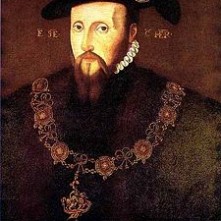


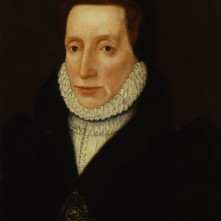
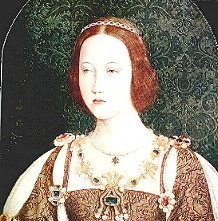

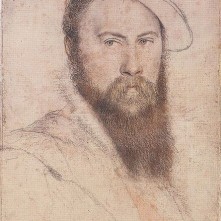
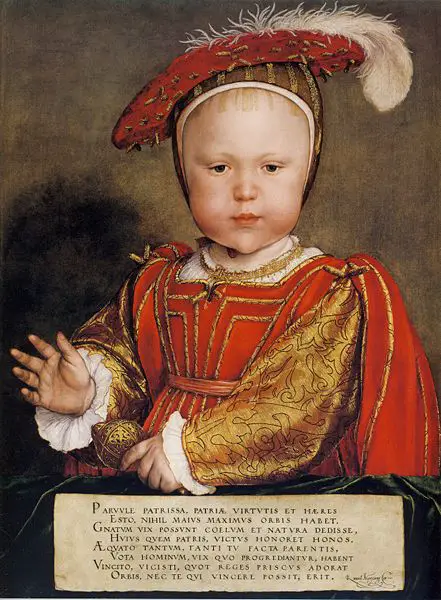
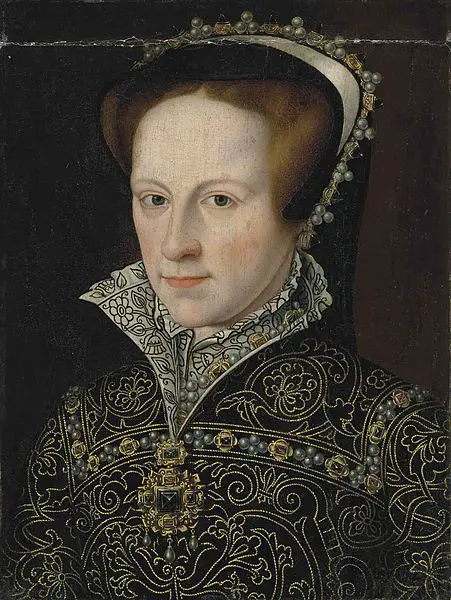
Leave a Reply